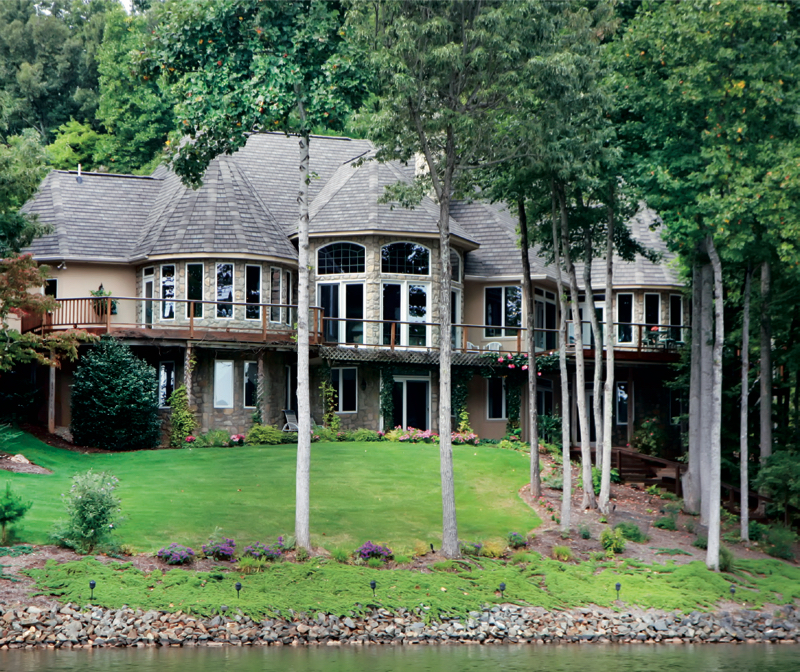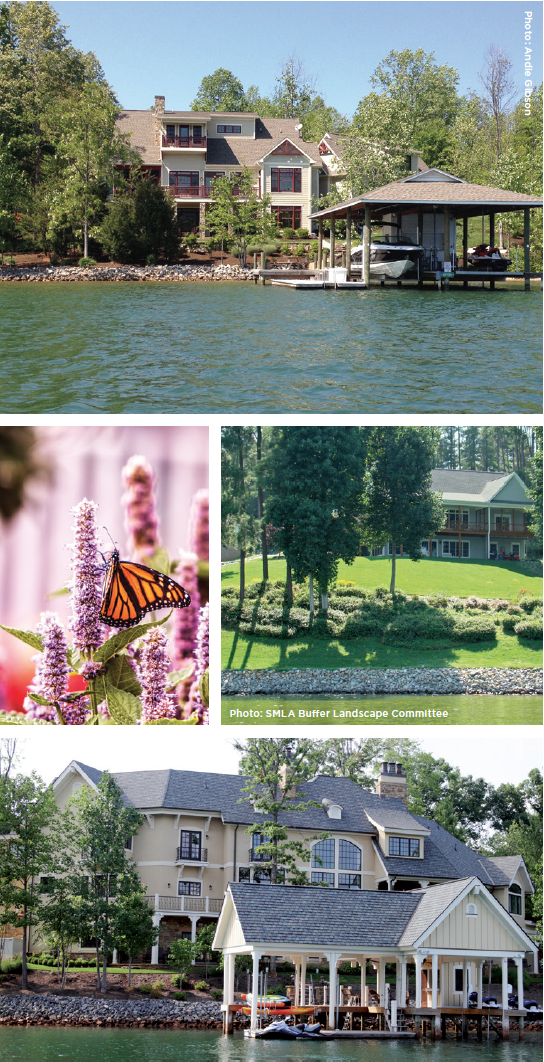
Responsible riparian stewardship has been gospel on the shores of Smith Mountain Lake for three decades or more—and the Smith Mountain Lake Association (SMLA) has been one of the bodies stationed prominently on the pulpit.
In addition to collaborating with Ferrum College on year-round water quality monitoring, SMLA educates homeowners on the benefits of buffer landscaping as a way to help protect the quality of the lake, as well as their investment.
According to Jim Pilversack, former chair of the association’s Buffer Landscape Committee, creating a buffer landscape is not as intimidating as it may sound. It consists primarily of planting (or maintaining naturally growing) trees, shrubs and perennials near the shoreline to impede the filtration of pollutants into the lake.
With more than 500 miles of shoreline, “big job” seems an inadequate term to describe SMLA’s ongoing effort. Yet waterfront property owners have embraced the cause with enthusiasm and creativity, according to Pilversack. And, he says, the dedication of individual landowners has made an astonishing difference in the health and quality of the ecosystem.
“The properties bordering the lakefront can be a significant help in filtering runoff water just before it enters the lake,” Pilversack says.
 For homeowners ready to start implementing buffer landscaping techniques, SMLA offers a number of educational resources that can be downloaded from its website. The organization also suggests these basic tips:
For homeowners ready to start implementing buffer landscaping techniques, SMLA offers a number of educational resources that can be downloaded from its website. The organization also suggests these basic tips:
- Start small if you have limited time or budget. Plant as much buffer next to the water as possible and in subsequent years add more plantings to lengthen or widen your buffer landscape.
- Choose plants for your plan that include as many native species as possible. They do well in local soils and conditions, and they also attract wildlife.
- Select a variety of trees, shrubs, ground covers and flowering perennials. Add visual interest with a mixture of heights and colors.
- Space your plantings to allow plenty of room for growth to mature size. Crowded plantings look good at first but often do not survive over time.
“There are so many variations for good bufferings to occur—from natural vegetation to terracing and more formal plantings,” Pilversack says. “There is no one best type of plant. We encourage the use of deep-rooted native plants as well as using layers such as trees, understory small trees, shrubs and perennials and groundcover.”
The practice that is absolutely discouraged (but still present from place to place) is running a traditional lawn down to the shoreline. Turf grasses typically are shallow-rooted and therefore largely ineffective as a buffer.
Those dismayed by the thought of losing their lakefront yard should consider the hidden advantages, Pilversack says.
“Once buffer landscaping is in place and established, there is less maintenance required than maintaining a large lawn with non-native ornamental plants,” he says. “There is also less need for fertilizer and insecticides, thus less cost and less pollutants going into the lake.”
Admittedly, some landowners who worry about obstructing their lake view may have to change their manner of thinking.
“My only comment on the ‘view of the water’ is that we need to move away from the mindset that we need a clear view of the water and replace that with having framed views with natural windows throughout the property,” Pilversack says.
Over the years, SMLA has taken its buffer campaign to the people.
“We promote it by giving talks to groups, writing articles for local publications, holding education events, and by meeting individually with homeowners to review what they might do on their property to ‘slow and filter the flow,’” Pilversack says.
Rich Barger, current Buffer Landscape Committee chair, points out that there has been a demonstration buffer planting at the Skelton 4-H Educational Conference Center for a number of years.
All are encouraged to take a look.
Then plant.
Some photography provided by: Andie Gibson and SMLA Buffer Landscape Committee
Ready to get started?
The Smith Mountain Lake Association website features an extensive list of plants, shrubs and trees suitable for riparian landscaping. Consider these suggestions to enhance your lakeside landscape:
 Black-eyed Susan
Black-eyed Susan
Columbine
Creeping Phlox
Lavender
Lobelia
Milkweed
Mountain Laurel
Purple coneflower
Redbud
Shasta daisy
Sourwood
Winterberry
Witch hazel
Wisteria
Yarrow
To have a member of the Buffer Landscape Advisory Service Team (BLAST) visit your home to advise and make recommendations on improving the buffering of your lakefront landscape, contact the SMLA office at (540) 719-0690 or email theoffice@smlassociation.org.
